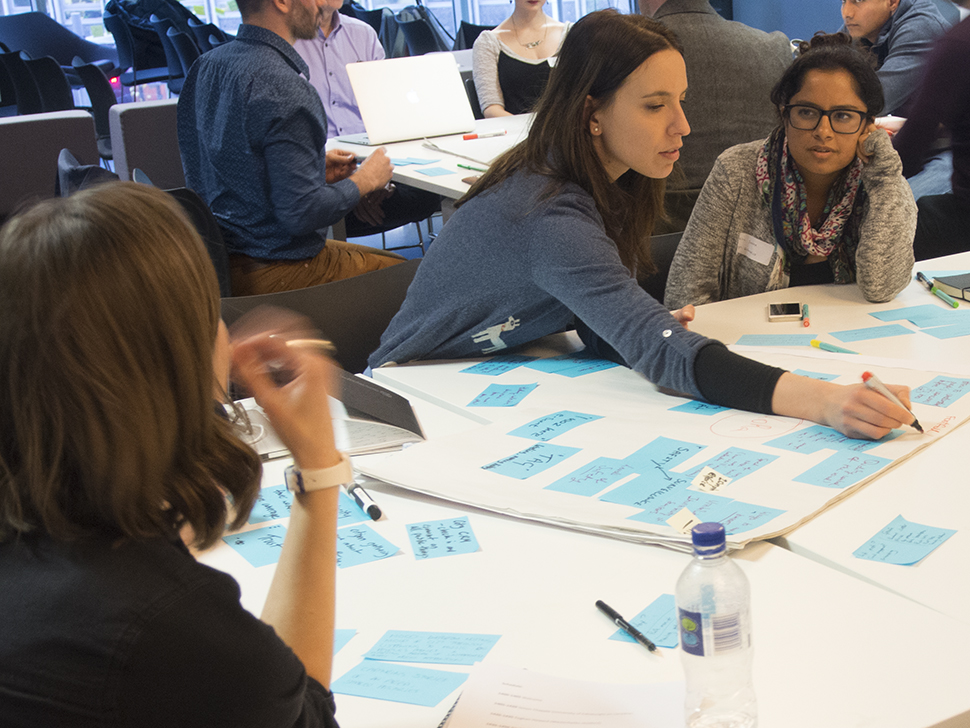A Design Informatics collider is a conceptual design event, bringing together computational thinking and design thinking, to pull informaticians together with designers, and problem holders. The first part of the collider sets the scene before breaking out in to workshop sessions.
The Collider on IoT in the City (11th November 2016) was framed by the following question:
In the context of a city-wide network for the Internet of Things, what connections can be made that link together civic, cultural and private activities to foster an open innovation culture?
The afternoon was introduced by Jon Oberlander, and then kicked off with three short talks:
Ewan Klein reviewed the overall theme of the event, and posed the following challenges:
- How do we balance collection of fine-grained, individual-level data with maintaining confidentiality, protecting privacy and engendering trust?
- Concentration of cultural assets in centre of the city – how do we make connections that embrace the outer areas, and the boundary between city and wider region?
- The interface between things is where the most interesting events take place – where are the urban edges in Edinburgh that provide opportunities for innovation?
- What information do people need in order to achieve a positive impact on their communities and the way they want to live?
- Can IoT data provide trusted evidence that feeds into contentious policy areas?
For the next hour, participants broke into four teams to discuss, brainstorm and curate project concepts. The projects that emerged featured a wide variety of ideas, briefly described below.
Group 1: Participatory sensing for community empowerment
Libraries could lend out not just books, CDs and videos but also sensors that could be deployed by residents to gather data about the city. The project aims to create a community ‘living lab’ where people could place sensors in areas that they don’t feel safe.
Group 2: Park Sensing
Placing sensors on dogs would allow people to gauge how busy parks are at a particular time, and help decide whether to make a trip or not. We could also tag children’s buggies and park benches so that we could map out particular types of usage.
Group 3: Your Glass Bin is Half Full!
Incentivising people to take and upload photos of how full their local recycling bins are would prevent top-floor tenement dwellers from making a wasted journey (and dumping their recycling into general waste). We could could do this by developing an app which would give Blockchain-based micro-payments to responsible citizens and help to create value within a community.
Group 4: Sustainable Travel through empowerment and reward
Placing digital displays on the outside of buses that visualise how full they are and how many car journeys they are saving could help encourage more sustainable travel.
Collectively, there was a feeling that we need think first and foremost about people and communities, then about data, and finally how IoT technology can play a supporting role.

